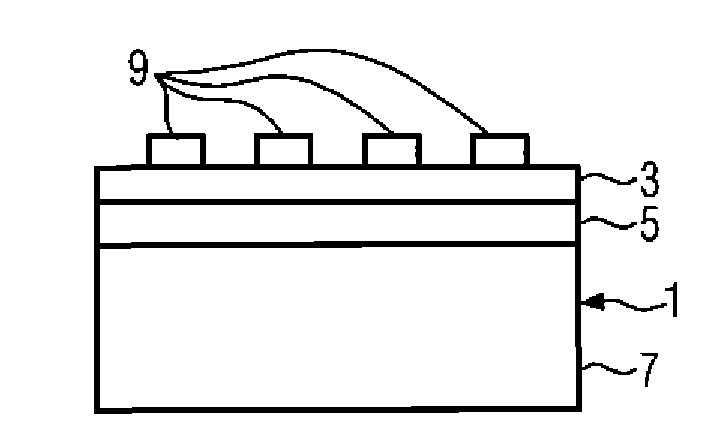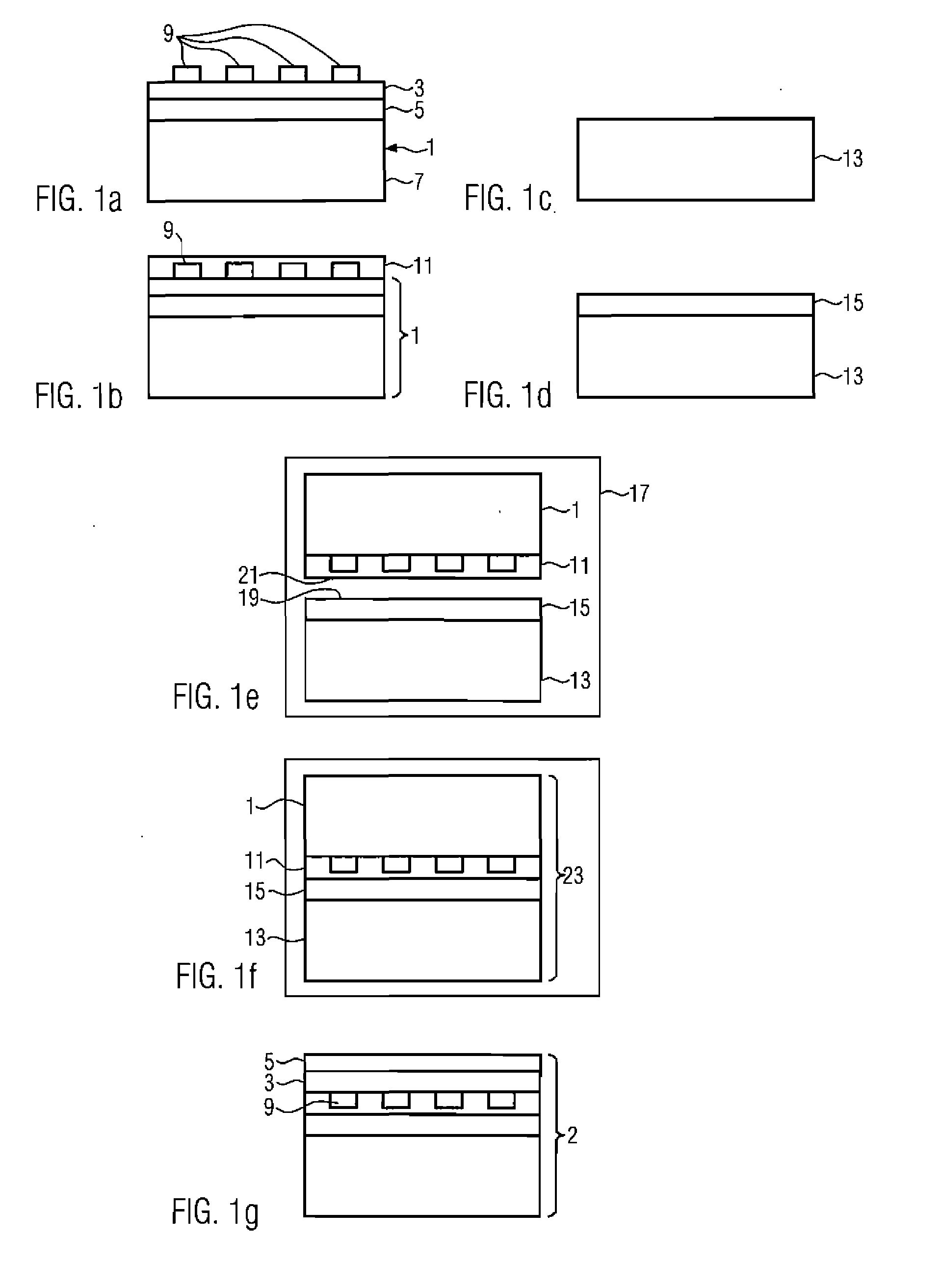Method for bonding two substrates
a technology of substrates and substrates, applied in the direction of electrical equipment, semiconductor devices, radio frequency controlled devices, etc., can solve the problems of fast and easy process, reduce and achieve fast and easy process. , the effect of reducing the number of edge voids
- Summary
- Abstract
- Description
- Claims
- Application Information
AI Technical Summary
Benefits of technology
Problems solved by technology
Method used
Image
Examples
Embodiment Construction
[0012]In this invention, at least one of the two substrates can comprise processed or at least partially processed devices. In this context, the term “device” relates to any structure on at least one of the substrates which at least partially belongs to the final devices such as electronic devices or opto-electronic devices comprising, amongst others, capacitor and / or transistor structures. It is the particular advantage of the invention that it can be applied to any bonded structure that requires high bonding energy but cannot be exposed to high temperature and / or that suffers from the presence of edge voids. This is the case when devices are present in or on one of the substrates.
[0013]According to an advantageous embodiment of the invention, the partial vacuum used in the contacting step can have a pressure of 1 to 50 Torr (1.33 to 66.7 mbar), preferably 1 to 20 Torr (1.33 to 26.6 mbar), preferably between 10 to 20 Torr (13.3 to 26.6 mbar). This level of vacuum can be easily and ...
PUM
 Login to View More
Login to View More Abstract
Description
Claims
Application Information
 Login to View More
Login to View More - R&D
- Intellectual Property
- Life Sciences
- Materials
- Tech Scout
- Unparalleled Data Quality
- Higher Quality Content
- 60% Fewer Hallucinations
Browse by: Latest US Patents, China's latest patents, Technical Efficacy Thesaurus, Application Domain, Technology Topic, Popular Technical Reports.
© 2025 PatSnap. All rights reserved.Legal|Privacy policy|Modern Slavery Act Transparency Statement|Sitemap|About US| Contact US: help@patsnap.com


